Home>Garden Essentials>What Does Potassium Do For Turf Grass
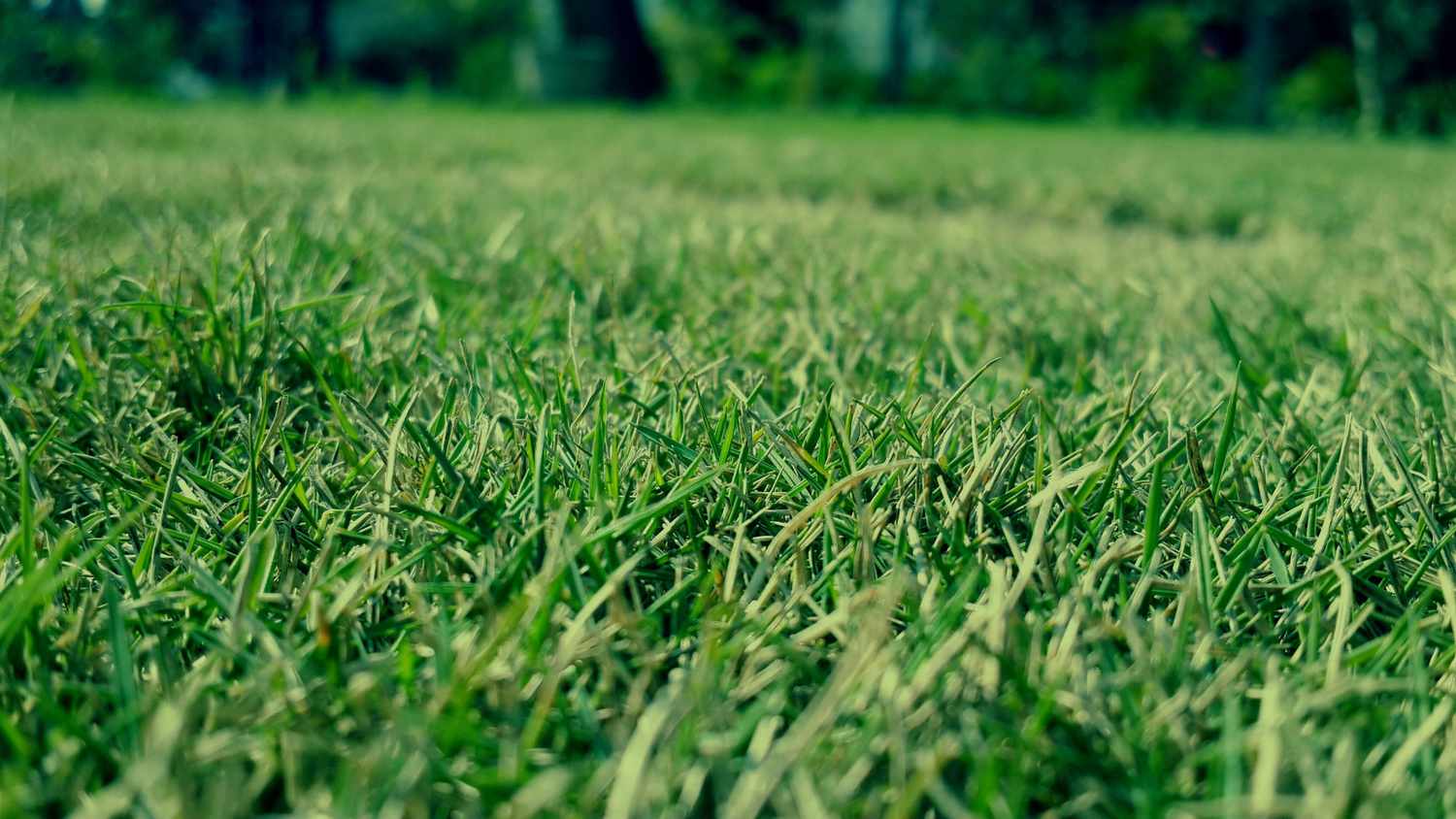

Garden Essentials
What Does Potassium Do For Turf Grass
Modified: August 17, 2024
Discover the importance of potassium for your garden's turf grass and learn how it enhances growth and resilience. Optimize your garden's potential with potassium-rich fertilizers.
(Many of the links in this article redirect to a specific reviewed product. Your purchase of these products through affiliate links helps to generate commission for Storables.com, at no extra cost. Learn more)
Introduction
Welcome to the world of turf grass! Whether you have a lush backyard lawn or are responsible for maintaining a professional sports field, you know the importance of keeping your turf grass healthy and vibrant. To achieve this, it is crucial to understand the key nutrients that play a vital role in turf grass growth and development. One such nutrient is potassium.
Potassium is an essential macronutrient that is required in relatively large amounts by turf grass to thrive. It is involved in various physiological and biochemical processes that contribute to the overall health and vigor of the grass. In this article, we will explore the importance of potassium for turf grass and its numerous functions.
So, why is potassium so crucial for turf grass? Well, let’s dive in and find out!
Key Takeaways:
- Potassium is like a superhero for turf grass, helping it grow strong, stay green, and fight off stress. It’s like giving the grass a power-up to be healthy and resilient!
- To keep turf grass happy, make sure it gets enough potassium through fertilizers, soil, or even special cover crops. It’s like giving the grass its favorite snacks for a healthy and vibrant lawn!
Read more: What Does Potassium Do For Grass
The Importance of Potassium for Turf Grass
Potassium, often referred to as the “quality nutrient,” plays a vital role in the health and overall appearance of turf grass. It is involved in numerous physiological processes that contribute to the strength, resilience, and aesthetic appeal of the grass.
One of the key reasons potassium is essential for turf grass is its significant role in promoting photosynthesis. Photosynthesis is the process by which plants convert sunlight into energy, enabling them to grow and thrive. Potassium aids in the production of ATP (adenosine triphosphate), a molecule that supplies energy to cells. By enhancing photosynthesis, potassium ensures that turf grass has an ample supply of energy for growth and development.
In addition to promoting photosynthesis, potassium also enhances water use efficiency in turf grass. It regulates the opening and closing of stomata, tiny openings on the leaf surface that control the exchange of gases, including water vapor. Potassium helps maintain proper stomatal function, reducing water loss through evaporation and transpiration. This benefits turf grass, especially in times of drought or water scarcity, by conserving water and improving its overall resilience.
Potassium also plays a crucial role in improving turf grass’ stress tolerance. As plants face environmental stressors such as heat, cold, disease, or pests, their ability to withstand these challenges becomes essential. Potassium helps strengthen the plant cell walls, making them more resistant to stress-induced damage. It also assists in activating enzymes responsible for combating oxidative stress, preventing cellular damage caused by harmful free radicals.
Furthermore, potassium facilitates nutrient uptake in turf grass. It helps regulate the movement of other nutrients within the plant, ensuring their efficient absorption and distribution. This is particularly important for macronutrients like nitrogen and phosphorus, which are crucial for healthy grass growth. By enhancing nutrient uptake, potassium promotes overall nutrient balance and maximizes the benefits of supplemental fertilizers.
Another significant function of potassium is its role in balancing pH levels in turf grass. Maintaining the proper pH range is crucial for nutrient availability and absorption. Potassium helps regulate the internal pH of plant cells, ensuring optimal conditions for nutrient uptake. It prevents deficiencies or toxicities associated with imbalanced pH levels, ultimately contributing to healthier and more vibrant turf grass.
Lastly, potassium is instrumental in enhancing root development in turf grass. Strong and extensive root systems are crucial for anchoring the plant, accessing water and nutrients, and withstanding environmental stresses. Potassium stimulates root growth, leading to a deeper, more robust root system. This, in turn, improves the overall health and stability of the turf grass.
In summary, potassium is a vital nutrient for turf grass as it promotes photosynthesis, enhances water use efficiency, improves stress tolerance, facilitates nutrient uptake, regulates pH levels, and enhances root development. Understanding the significance of potassium and ensuring its proper supply will go a long way in achieving healthy, vibrant, and resilient turf grass.
Functions of Potassium in Turf Grass
Potassium, as an essential macronutrient, performs several important functions in the growth and development of turf grass. Let’s take a closer look at these functions:
- Promoting Photosynthesis: Potassium plays a crucial role in the process of photosynthesis, which is essential for the production of energy in plants. It helps in the synthesis of ATP (adenosine triphosphate), a molecule that provides energy for various metabolic activities. By promoting photosynthesis, potassium ensures that turf grass has a sufficient energy supply for growth and maintenance.
- Enhancing Water Use Efficiency: Turf grass needs an adequate supply of water for its metabolic processes. Potassium helps regulate the opening and closing of stomata, small leaf openings responsible for gas exchange. By controlling stomatal activity, potassium improves the water use efficiency of turf grass, reducing water loss through transpiration and evaporation.
- Improving Stress Tolerance: Turf grass can face various stresses, such as heat, cold, drought, disease, or pest attacks. Potassium plays a vital role in enhancing the grass’s ability to withstand these stresses. It strengthens cell walls, making them more resistant to damage. Potassium also activates enzymes that scavenge harmful free radicals, protecting the grass from oxidative stress.
- Facilitating Nutrient Uptake: Potassium helps regulate the movement of other nutrients within the plant, improving their uptake and distribution. It plays a crucial role in the efficient absorption of macronutrients like nitrogen and phosphorus. By facilitating nutrient uptake, potassium ensures that the grass receives the necessary nutrients for proper growth and development.
- Regulating Stomatal Opening and Closure: Stomata control the exchange of gases, including water vapor, in plants. Potassium helps regulate the opening and closing of stomata, maintaining proper gas exchange and water balance. This is particularly important during periods of drought or water scarcity, as potassium ensures the grass conserves water by minimizing excessive transpiration.
- Balancing pH Levels: Maintaining the appropriate pH level is essential for proper nutrient availability and absorption in plants. Potassium plays a significant role in regulating the internal pH of plant cells, ensuring optimal conditions for nutrient uptake. By balancing pH levels, potassium prevents nutrient deficiencies or toxicities, contributing to healthier and more vigorous turf grass.
- Enhancing Root Development: Strong and extensive root systems are crucial for healthy turf grass. Potassium stimulates root growth, leading to the development of deeper and more robust root systems. This enhances nutrient and water absorption, improves the grass’s ability to withstand stress, and promotes overall stability and health.
So, as you can see, potassium performs a range of functions that are essential for the growth, health, and resilience of turf grass. Understanding these functions and ensuring an adequate supply of potassium will contribute to maintaining a vibrant and thriving lawn or sports field.
Promoting Photosynthesis
Photosynthesis is a vital process in plants, including turf grass, where sunlight is converted into chemical energy. It is the foundation for the growth and development of the grass, making it essential to understand how potassium promotes this crucial process.
Potassium plays a significant role in photosynthesis by aiding in the production of ATP (adenosine triphosphate), a molecule that supplies energy to plant cells. ATP is synthesized during the light-dependent reactions of photosynthesis, where light energy is converted into chemical energy in the form of ATP and NADPH. This energy is then used in the subsequent light-independent reactions to convert carbon dioxide into glucose, the primary source of energy for the plant.
By assisting in the synthesis of ATP, potassium ensures that turf grass has sufficient energy for growth, maintenance, and repair. Adequate potassium levels enable the grass to carry out photosynthesis efficiently, optimizing carbon assimilation, and promoting the production of glucose, which fuels various metabolic processes within the plant.
In addition to its role in ATP synthesis, potassium also influences the activity of enzymes involved in photosynthesis. Enzymes are essential proteins that catalyze the chemical reactions occurring during the process. Potassium helps activate these enzymes, ensuring their optimal functioning. This, in turn, increases the efficiency of photosynthesis, allowing turf grass to convert sunlight more effectively into chemical energy.
Moreover, potassium enhances the efficiency of photosynthetic pigment production. Chlorophyll, the green pigment responsible for capturing sunlight, is essential for photosynthesis. Potassium aids in the synthesis and accumulation of chlorophyll in turf grass, ensuring that there is an ample supply of this pigment for optimal light absorption. This ultimately leads to more efficient photosynthesis and contributes to the grass’s overall health and vigor.
It is important to note that maintaining a balanced ratio of potassium to other essential macronutrients, such as nitrogen and phosphorus, is crucial for promoting photosynthesis in turf grass. This balanced nutrient supply ensures that all the necessary components for optimal photosynthetic activity are available to the grass.
In summary, potassium plays a critical role in promoting photosynthesis in turf grass. It aids in ATP production, activates enzymes involved in photosynthesis, and enhances the efficiency of chlorophyll synthesis. By ensuring an adequate supply of potassium, turf grass can carry out photosynthesis efficiently, leading to healthier and more vibrant growth.
Enhancing Water Use Efficiency
In the world of turf grass, water is a precious resource that is essential for the health and survival of the grass. However, water scarcity and the need for efficient water management are becoming increasingly important. This is where potassium plays a crucial role in enhancing water use efficiency in turf grass.
One of the primary ways potassium improves water use efficiency is by regulating the opening and closing of stomata. Stomata are small openings found on the surface of leaves that allow for the exchange of gases, including water vapor. When stomata are open, water vapor is released through a process called transpiration, which is important for cooling the plant and facilitating nutrient uptake. However, excessive transpiration can lead to significant water loss.
Potassium helps maintain proper stomatal function in turf grass. It controls the opening and closing of stomata, ensuring they operate optimally to balance the plant’s need for gas exchange and water conservation. By regulating stomatal activity, potassium reduces water loss through transpiration, allowing the grass to conserve water and improve its overall water use efficiency.
Furthermore, potassium helps the grass adapt to changing water availability. During periods of drought or limited water supply, the grass needs to minimize water loss and optimize its use. Potassium aids in this process by adjusting the stomatal opening and closure in response to water stress. By conserving water, the grass can better withstand periods of water scarcity and maintain its health and vigor.
Potassium also plays a role in improving the grass’s ability to tolerate waterlogged or excessively wet conditions. These conditions can lead to oxygen deprivation in the root zone, affecting the grass’s overall health. Potassium helps regulate osmotic potential and maintain proper membrane permeability, allowing the grass to better manage water uptake in these challenging conditions.
Additionally, potassium influences the distribution of water within the plant. It helps ensure that water is transported efficiently from the roots to the shoots and leaves, providing necessary hydration for various physiological processes. By optimizing water distribution, potassium promotes healthy growth and development in turf grass.
Proper potassium levels in the soil are crucial for maximizing water use efficiency in turf grass. It is important to note that excessive or deficient potassium levels can negatively impact the grass’s ability to manage water effectively. Therefore, regular soil testing and appropriate potassium supplementation are essential in achieving optimal water use efficiency in turf grass.
In summary, potassium plays a significant role in enhancing water use efficiency in turf grass. It regulates stomatal function, improves the grass’s ability to adapt to water availability, helps tolerate waterlogged conditions, and influences water distribution within the plant. By optimizing water use, potassium contributes to the overall health, resilience, and sustainability of turf grass.
Read more: What Does Astro Turf Mean
Improving Stress Tolerance
Turf grass faces various environmental stresses, including heat, cold, drought, disease, and pest attacks. These stresses can significantly impact the health and appearance of the grass. However, with the help of potassium, turf grass can improve its stress tolerance and better withstand adverse conditions.
Potassium plays a crucial role in strengthening the cell walls of turf grass. It helps in the synthesis of structural carbohydrates, such as cellulose and hemicellulose, which are essential components of cell walls. By increasing the deposition of these carbohydrates, potassium enhances the structural integrity and strength of the grass’s cells. This helps the grass withstand mechanical stress, such as foot traffic, and reduces the risk of cell damage during environmental stressors.
Furthermore, potassium is involved in activating enzymes that scavenge harmful free radicals produced during stress conditions. Free radicals, such as reactive oxygen species (ROS), can damage cell membranes and DNA, leading to cell death and tissue damage. Potassium helps in the synthesis and activation of enzymes, such as superoxide dismutase (SOD) and catalase, which neutralize these free radicals, protecting the grass from oxidative stress.
During periods of drought or water scarcity, potassium plays a critical role in helping turf grass survive. It regulates stomatal functioning, controlling the opening and closing of stomata to minimize water loss through transpiration. By conserving water, potassium ensures that the grass can sustain itself and continue to perform its essential physiological processes, even under limited water availability.
Potassium also helps turf grass adapt to cold and freezing temperatures. It improves the plant’s ability to withstand freezing injury by reducing the formation of ice crystals in cells and maintaining the proper balance of electrolytes. This helps protect the grass’s cellular integrity and prevents damage caused by frost and ice formation.
In addition, potassium aids in the grass’s defense against diseases and pests. It stimulates the production of defense mechanisms, such as phytoalexins and pathogenesis-related proteins, which help fight off pathogens. Potassium also improves the grass’s ability to produce defensive compounds that deter pests, reducing the risk of damage caused by insect feeding or infestation.
It is worth noting that maintaining adequate potassium levels is crucial for enhancing stress tolerance in turf grass. Both potassium deficiency and excess can be detrimental to the grass’s ability to cope with stress. Regular soil testing and appropriate potassium supplementation ensures that the grass receives the optimal amount of this essential nutrient to withstand and recover from environmental stresses.
In summary, potassium is essential in improving stress tolerance in turf grass. It strengthens cell walls, enhances antioxidant defense mechanisms, regulates stomatal functioning, protects against freezing injury, and aids in disease and pest resistance. By promoting stress tolerance, potassium contributes to the overall health, resilience, and longevity of turf grass.
Facilitating Nutrient Uptake
Nutrient uptake is a vital process for the growth and development of turf grass. Proper absorption and utilization of essential nutrients are essential for maintaining a healthy and vibrant lawn. Potassium plays a significant role in facilitating nutrient uptake in turf grass, ensuring that the grass receives the necessary nutrients for optimal growth.
Potassium helps regulate the movement of other nutrients within the plant. It plays a crucial role in maintaining proper ion balance and osmotic potential, which are essential for nutrient absorption and transport. Potassium acts as a facilitator, ensuring that nutrients are efficiently taken up by the roots and transported to all parts of the grass.
One of the key nutrients that potassium influences is nitrogen. Nitrogen is a primary macronutrient responsible for promoting lush, green growth in turf grass. Potassium aids in nitrogen uptake by enhancing the activity of nitrate reductase, an enzyme involved in converting nitrate into ammonium, a form of nitrogen that can be readily assimilated by the plant. By facilitating nitrogen uptake, potassium contributes to the robust growth and vibrant color of turf grass.
In addition to nitrogen, potassium also influences the uptake and utilization of phosphorus, another essential macronutrient. Phosphorus is crucial for energy transfer and various metabolic processes in the plant. Potassium helps in regulating phosphorus uptake by maintaining the proper functioning of transport proteins in the plant root cells. This ensures that phosphorus is efficiently absorbed and utilized by the grass, promoting healthy growth and development.
Potassium also aids in the uptake of other important nutrients, including micronutrients such as iron, manganese, and zinc. These micronutrients are required in smaller quantities but are essential for various enzymatic reactions and overall plant health. Potassium helps maintain the proper pH within the plant, which is crucial for the availability and uptake of micronutrients. By ensuring optimal pH conditions, potassium promotes the efficient uptake and utilization of these micronutrients in turf grass.
It is important to note that appropriate soil pH is critical for the availability and uptake of nutrients in turf grass. Potassium helps regulate pH levels within the plant, creating optimal conditions for nutrient absorption. Therefore, it is essential to maintain a balanced soil pH and ensure an adequate supply of potassium to support efficient nutrient uptake in turf grass.
In summary, potassium plays a vital role in facilitating nutrient uptake in turf grass. It regulates the movement of nutrients within the plant, enhances nitrogen and phosphorus uptake, and ensures the efficient absorption of micronutrients. By supporting nutrient uptake, potassium contributes to the overall health, vigour, and proper growth of turf grass.
Regulating Stomatal Opening and Closure
Stomata are tiny openings found on the surface of the leaves of turf grass that regulate the exchange of gases, including water vapor, carbon dioxide, and oxygen. The proper functioning of stomata is crucial for maintaining water balance, facilitating photosynthesis, and ensuring optimal gas exchange. Potassium plays a significant role in regulating stomatal opening and closure, thus impacting the overall health and performance of turf grass.
Potassium helps maintain the turgor pressure in guard cells, which surround and control the opening and closing of the stomatal pores. When there is an ample supply of potassium, it enters the guard cells and increases their osmotic potential. This increase in osmotic potential leads to an influx of water into the guard cells, causing them to swell and the stomatal pores to open. When the stomatal pores are open, the exchange of gases, including water vapor and carbon dioxide, can occur.
On the other hand, when the potassium supply is limited, the osmotic potential of the guard cells decreases. This leads to the loss of water from the guard cells, causing them to shrink and the stomatal pores to close. Closed stomata reduce water loss through transpiration, helping to conserve water during periods of limited water availability or drought.
By regulating stomatal opening and closure, potassium helps turf grass optimize its water use efficiency. During times of water scarcity, potassium enables the grass to minimize excessive water loss through transpiration by reducing the opening of stomata. This conservation of water is essential for the grass’s survival and ensures that it can withstand periods of drought or water restrictions.
Additionally, the regulation of stomatal opening and closure by potassium has an impact on the overall performance of turf grass. When stomata are open, carbon dioxide can enter the leaf, allowing for photosynthesis to occur. Photosynthesis is crucial for the production of sugars and other organic compounds that provide energy for the grass’s growth and maintenance.
The efficient regulation of stomatal opening and closure also impacts gas exchange within the plant, including the exchange of oxygen and the removal of excess water vapor. Proper gas exchange is necessary for the grass to respire and eliminate metabolic byproducts, ensuring optimal cellular function.
It is important to note that the regulation of stomatal opening and closure is influenced by various environmental factors, including light intensity, humidity, and temperature. Proper potassium nutrition is essential to enable the grass to respond appropriately to these factors and adjust its stomatal behavior accordingly.
In summary, potassium plays a vital role in regulating stomatal opening and closure in turf grass. By influencing the turgor pressure in guard cells, potassium helps control the size of the stomatal pores and thus impacts water loss through transpiration and carbon dioxide uptake for photosynthesis. This regulation contributes to the overall health, water use efficiency, and performance of turf grass.
Applying potassium to turf grass helps improve its overall health and resilience. It aids in root development, disease resistance, and drought tolerance, leading to a stronger and more vibrant lawn.
Balancing pH Levels
pH is a measure of the acidity or alkalinity of the soil, and it plays a crucial role in turf grass health and nutrient availability. The pH level directly affects the solubility and accessibility of essential nutrients, influencing their uptake and utilization by the grass. Potassium, as an essential nutrient, plays a significant role in balancing pH levels, maintaining optimal conditions for nutrient availability and absorption in turf grass.
When the pH of the soil is too acidic (low pH), essential nutrients can become less available to the grass. This is because high soil acidity can lead to the chemical binding of nutrients, making them less soluble and thus less accessible to the grass roots. Additionally, some nutrients, such as nitrogen, are more prone to leaching in acidic soil conditions, further reducing their availability to the grass.
Potassium helps balance pH levels in the soil by regulating the movement of hydrogen ions (H+) within the plant cells. Hydrogen ions are responsible for acidity, and potassium helps moderate their concentration and distribution. By regulating hydrogen ion movement, potassium helps maintain a neutral or slightly alkaline pH range, optimizing nutrient availability for turf grass.
Moreover, proper pH balance facilitated by potassium positively affects the activity of microorganisms in the soil. Beneficial soil microorganisms, such as bacteria and fungi, play a crucial role in nutrient cycling and availability. These microorganisms are sensitive to pH levels, and when the pH is too acidic or too alkaline, their activity can be hindered. By promoting balanced pH levels, potassium creates a favorable environment for these beneficial microorganisms, enhancing nutrient availability and grass health.
Another aspect affected by pH balance is the availability of micronutrients. Micronutrients, such as iron, manganese, and zinc, are required in smaller quantities but are essential for turf grass health. Proper pH levels ensure that these micronutrients are readily available to the grass. For example, in acidic soil conditions, iron may become less available, leading to iron deficiency symptoms like leaf yellowing (chlorosis). Potassium’s role in balancing pH helps prevent such micronutrient deficiencies.
It’s important to note that different turf grass species may have different pH preferences. Some grass species, like Zoysia or Bermuda grass, prefer slightly acidic soil conditions, while others, such as Fescue or Kentucky Bluegrass, thrive in neutral to slightly alkaline soils. Understanding the pH requirements of the specific turf grass species you are growing is essential for maintaining optimal growth and health.
In summary, potassium plays a crucial role in balancing pH levels in the soil for turf grass. By regulating the movement of hydrogen ions and maintaining optimal pH conditions, potassium ensures the availability and accessibility of essential nutrients. This contributes to healthier turf grass, improved nutrient uptake, and overall vigor of the lawn or sports field.
Read more: What Does Astro Turf Look Like
Enhancing Root Development
In the world of turf grass, strong and healthy roots are the foundation for a vibrant and resilient lawn. Deep and extensive root systems provide numerous benefits, including improved nutrient and water uptake, better stress tolerance, and overall turf grass health. Potassium plays a significant role in enhancing root development in turf grass, ensuring the establishment of robust and efficient root systems.
Potassium stimulates root growth and branching in turf grass. It promotes cell division and elongation, leading to the development of denser and more extensive root systems. The enhanced root growth facilitated by potassium allows the grass to explore a larger soil volume, accessing essential nutrients and water more effectively.
Furthermore, potassium enhances the formation of root hairs in turf grass. Root hairs are tiny extensions of root cells that significantly increase the surface area available for nutrient and water absorption. These microscopic structures play a crucial role in nutrient uptake and enhance the grass’s ability to access nutrients that may be present in low concentrations in the soil.
Potassium also improves the development of lateral roots. Lateral roots emerge from the main roots and help in anchoring the grass, absorbing nutrients, and facilitating water uptake. By promoting lateral root growth, potassium contributes to a more robust and stable turf grass system, making the grass more resistant to environmental stresses such as wind or foot traffic.
Enhanced root development facilitated by potassium also improves the grass’s ability to tolerate drought and water stress. Deeper and more extensive root systems can access water stored in lower soil layers, allowing the grass to survive and maintain its health even during periods of limited water availability. Additionally, potassium helps regulate osmotic potential in root cells, allowing the grass to efficiently manage water uptake and maintain proper hydration.
Another benefit of improved root development is the increased capacity for nutrient uptake in turf grass. Potassium plays a vital role in maintaining the movement of nutrients within the plant, ensuring their efficient absorption and distribution. With a more extensive and efficient root system, the grass can access a greater pool of nutrients in the soil, contributing to its overall health, vigor, and growth.
It is worth noting that other factors, such as soil structure, compaction, and organic matter content, also influence root development in turf grass. However, potassium, along with other essential nutrients, plays a critical role in providing the necessary building blocks and physiological support for healthy root growth.
In summary, potassium plays a significant role in enhancing root development in turf grass. It stimulates root growth and branching, promotes the formation of root hairs, and improves lateral root development. With stronger and more extensive root systems, turf grass can access nutrients and water more efficiently, tolerate environmental stresses, and establish the foundation for a healthy and resilient lawn or sports field.
Potassium Deficiency in Turf Grass
Potassium deficiency is a common issue that can affect the health and appearance of turf grass. When turf grass does not receive an adequate supply of potassium, it can lead to various symptoms and negatively impact the grass’s overall growth and performance.
One of the primary signs of potassium deficiency in turf grass is leaf discoloration. The leaves may start to show a yellowing or chlorosis, particularly along the leaf margins or in older leaves. This yellowing is often accompanied by a browning or necrosis of leaf tissue, which can progress to leaf death if the deficiency persists. These visual symptoms are a result of the grass’s inability to produce sufficient chlorophyll, the pigment responsible for photosynthesis and the green color of the leaves.
Potassium deficiency can also cause poor root development in turf grass. The roots may appear stunted, weak, or have a reduced branching pattern. This weak root system makes the grass more susceptible to stress, disease, and pest infestations. Additionally, a compromised root system can hinder the grass’s ability to access water and nutrients from the soil, leading to further nutrient deficiencies and overall decline in turf health.
Another symptom of potassium deficiency is reduced turf density. The grass may have sparse growth and thinner turf coverage. This can result in patches or areas of weaker grass, making the lawn more susceptible to weed invasion, erosion, or damage from foot traffic. The overall aesthetics and playability of the lawn or sports field can be negatively impacted as a result of the reduced turf density.
Potassium deficiency can also affect the grass’s ability to withstand environmental stresses. Without an adequate supply of potassium, turf grass becomes more susceptible to drought, heat stress, cold injury, and other adverse conditions. It may exhibit reduced tolerance to these stresses, resulting in increased turf damage and slower recovery from stress-induced damage.
In addition to the visible symptoms, potassium deficiency can also impact the overall metabolic and physiological processes in turf grass. It can disrupt the efficient uptake and utilization of other essential nutrients, leading to secondary nutrient deficiencies. This can further exacerbate the negative effects on the grass’s growth and performance.
It’s important to diagnose potassium deficiency accurately through soil testing and visual inspections. If potassium deficiency is confirmed, appropriate corrective measures should be taken to address the deficiency. This may include amending the soil with potassium-rich fertilizers, following recommended application rates, and ensuring proper irrigation and cultural practices to support nutrient uptake.
In summary, potassium deficiency can have detrimental effects on turf grass. It can result in leaf discoloration, poor root development, reduced turf density, increased susceptibility to environmental stresses, and disruption of nutrient uptake. Recognizing and addressing potassium deficiency is essential for maintaining healthy, vibrant, and resilient turf grass.
Symptoms of Potassium Deficiency
Kerf grass relies on a balanced supply of nutrients for proper growth and development. When there is a deficiency of potassium, one of the essential macronutrients, the grass can exhibit various symptoms that indicate its nutrient needs are not being met. Recognizing these symptoms of potassium deficiency is crucial in addressing the issue and restoring the health and vitality of the turf grass.
1. Leaf Chlorosis: One of the most noticeable symptoms of potassium deficiency is leaf discoloration. The grass may show yellowing or chlorosis, typically starting at the leaf margins and spreading inward. This chlorosis may appear in older leaves first, progressing to younger leaves as the deficiency worsens. In severe cases, the whole leaf may turn completely yellow or brown, and necrosis may occur.
2. Brown or Necrotic Leaf Tips: Along with leaf yellowing, potassium deficiency can cause browning or necrosis of the leaf tips and edges. This necrosis may start as small brown areas that gradually expand, drying out the leaf tissue. The browning and necrosis are a result of impaired water and nutrient transport, leading to cellular damage and death.
3. Reduced Turf Density: Potassium deficiency can lead to reduced turf density and poor growth. The grass may appear thin and sparse, with open areas or patches where the grass is weak or struggling to grow. This reduced density makes the turf more susceptible to weed invasion, erosion, and other damage, compromising the overall aesthetics and playability of the lawn or sports field.
4. Weak or Stunted Root Growth: Potassium deficiency affects root development, resulting in weak or stunted root growth. The roots may appear shallow, with reduced branching and overall root mass. This compromised root system limits the grass’s ability to access water and nutrients from the soil, making it more susceptible to stress and nutrient deficiencies.
5. Increased Susceptibility to Stress: Potassium deficiency compromises the grass’s ability to tolerate environmental stresses. The turf grass may show increased susceptibility to drought, heat stress, cold injury, and disease. It may exhibit poor recovery from stress, indicating its weakened resilience and reduced ability to withstand adverse conditions.
6. Secondary Nutrient Deficiencies: Potassium deficiency can disrupt the uptake and utilization of other essential nutrients, leading to secondary nutrient deficiencies. This can result in additional symptoms such as stunted growth, leaf abnormalities, and reduced overall vigor. Common secondary nutrient deficiencies associated with potassium deficiency include nitrogen, phosphorus, and magnesium.
It is important to note that the appearance and severity of these symptoms may vary depending on the grass species and other environmental factors. Additionally, symptoms of potassium deficiency can overlap with symptoms of other nutrient deficiencies or environmental stresses. Therefore, it is crucial to conduct soil testing and nutrient analysis to accurately diagnose and address the nutrient deficiencies in turf grass.
In summary, recognizing the symptoms of potassium deficiency in turf grass is essential for proper diagnosis and treatment. Leaf chlorosis, brown or necrotic leaf tips, reduced turf density, weak root growth, increased susceptibility to stress, and secondary nutrient deficiencies are all indicators of potassium deficiency. Addressing the deficiency through appropriate fertilization and cultural practices is key to restoring the health and vitality of the turf grass.
Sources of Potassium for Turf Grass
Ensuring an adequate supply of potassium is essential for maintaining the health and vitality of turf grass. There are various sources of potassium that can be utilized to meet the grass’s nutrient requirements. Understanding and utilizing these sources effectively is crucial in promoting optimal growth and performance of the turf grass.
1. Soil: The soil itself is a primary source of potassium for turf grass. Potassium is naturally present in the soil, released from the weathering of minerals and organic matter. The availability of soil potassium depends on factors such as soil type, organic matter content, and pH. Proper soil testing helps determine the existing potassium level in the soil, providing valuable information for managing the grass’s nutrient needs.
2. Fertilizers: Fertilizers are a common and effective way to supplement potassium in turf grass. Potassium-based fertilizers, such as potassium chloride (Muriate of Potash) or potassium sulfate, are specifically formulated to provide readily available potassium to the grass. These fertilizers can be applied in granular form, liquid form, or as part of a balanced fertilizer blend.
3. Organic Matter: Organic matter, such as compost, manure, or plant residues, is a valuable source of potassium for turf grass. As organic matter decomposes, the nutrients, including potassium, are slowly released into the soil, providing a natural and slow-release source of potassium. Regular incorporation of organic matter into the soil can help maintain a healthy nutrient balance and promote long-term nutrient availability.
4. Potassium Amendments: In cases of severe potassium deficiency or specific soil conditions, potassium amendments may be necessary to meet the grass’s nutrient requirements. Potassium amendments, such as potassium carbonate or potassium oxide, are applied to the soil to increase potassium levels. However, it is important to regularly monitor soil nutrient levels and consult with an expert to determine the appropriate application rates and methods.
5. Potassium-Rich Cover Crops: Planting cover crops that are naturally high in potassium can also provide a source of this essential nutrient for turf grass. Leguminous cover crops, such as clover or vetch, are known to accumulate potassium in their biomass. When these cover crops are mowed or incorporated into the soil, they release the potassium, making it available for the turf grass.
6. Irrigation Water: In some situations, irrigating with water that contains a moderate amount of potassium can contribute to the grass’s potassium needs. However, the potassium content in irrigation water varies depending on the water source and location. Regular water testing can help determine the potassium content in the irrigation water and its contribution towards meeting the grass’s nutrient requirements.
When utilizing these sources of potassium, it is important to consider factors such as soil type, grass species, climate, and nutrient requirements. Regular soil testing is crucial in determining the nutrient levels in the soil and planning the appropriate fertilizer or amendment applications. Working with a knowledgeable expert, such as a turfgrass specialist or agronomist, can also help ensure proper nutrient management for the turf grass to thrive.
In summary, sources of potassium for turf grass include soil, fertilizers, organic matter, potassium amendments, potassium-rich cover crops, and irrigation water. Proper utilization of these sources, coupled with regular soil testing and nutrient management, can provide the grass with the necessary potassium to maintain its health, vigor, and performance.
Read more: What Do You Put Under Astro Turf
Fertilizer Recommendations for Turf Grass
Proper fertilization is crucial for maintaining the health, growth, and appearance of turf grass. Fertilizers provide essential nutrients, including potassium, nitrogen, and phosphorus, that are necessary for optimal turf grass growth. While specific fertilizer recommendations may vary depending on factors such as grass type, soil conditions, and climate, here are some general guidelines to consider:
1. Soil Testing: Before applying any fertilizer, it is essential to conduct a soil test to determine the nutrient levels and pH of the soil. A soil test provides valuable information about the existing nutrient content and allows for targeted fertilization based on the grass’s specific needs. It also helps identify any nutrient deficiencies or imbalances that need to be addressed.
2. Balanced Fertilization: A balanced fertilizer provides a mix of essential nutrients in the appropriate ratios for turf grass. Look for fertilizers with an NPK (Nitrogen, Phosphorus, Potassium) ratio that suits the specific requirements of the grass species being grown. For instance, a 10-10-10 or 15-15-15 fertilizer is often a good choice for general turf grass fertilization. However, it’s important to follow the recommendations based on the soil test to avoid over-application of certain nutrients.
3. Slow-Release Fertilizers: Consider using slow-release or controlled-release fertilizers, especially for larger turf areas. These fertilizers release nutrients gradually over an extended period, ensuring a steady and consistent supply of nutrients to the grass. Slow-release fertilizers can help minimize nutrient leaching and reduce the risk of nutrient runoff into water bodies.
4. Seasonal Fertilization: Adjust your fertilization schedule based on the specific needs of the grass and the regional climate. In general, cool-season grasses benefit from fertilization in early spring and fall, when growth rates are highest. Warm-season grasses often require fertilization during the active growing season, typically in late spring and early summer. However, it’s important to consider factors such as weather patterns, grass health, and turfgrass management practices when determining the optimal timing for fertilization.
5. Proper Application Rates: Follow the recommended application rates provided by the fertilizer manufacturer or based on the soil test results. Applying too much fertilizer can lead to nutrient imbalances, excessive growth, and environmental pollution. On the other hand, under-application may not provide sufficient nutrients for the grass’s needs. It’s essential to measure and distribute the fertilizer evenly to avoid uneven nutrient distribution and potential burn of the grass.
6. Cultural Practices: Fertilizer alone cannot guarantee healthy turf grass. Cultural practices, such as proper watering, mowing, and aeration, also play a crucial role in maintaining the grass’s health. Adequate irrigation ensures efficient nutrient absorption, while regular mowing at the appropriate height encourages dense growth. Aeration improves soil structure and allows better penetration of nutrients to the grass roots.
7. Environmental Considerations: Always follow local regulations and environmental guidelines when applying fertilizers to turf grass. Avoid fertilizing near water bodies to prevent runoff. Carefully clean up any fertilizer spills or excess to prevent contamination. Consider using organic or eco-friendly fertilizers that have been certified for environmental safety.
Remember, these fertilizer recommendations provide general guidelines, and it is important to consider specific grass species, soil conditions, and regional factors. Consulting with a turfgrass specialist, agronomist, or extension service can provide valuable insights and personalized recommendations for your specific turf grass needs.
In summary, proper fertilization is essential for maintaining healthy turf grass. Conduct a soil test, apply a balanced fertilizer, consider slow-release options, adjust fertilization based on the season and grass’s needs, follow proper application rates, implement good cultural practices, and adhere to environmental guidelines for a vibrant and resilient lawn or sports field.
Potassium Application Methods
When it comes to applying potassium to turf grass, there are several methods that can be used to ensure the grass receives an adequate supply of this essential nutrient. The choice of application method depends on factors such as grass type, soil conditions, equipment availability, and the specific needs of the grass. Here are some common potassium application methods for turf grass:
1. Granular Fertilizer: Granular fertilizers are a popular and widely used method for applying potassium to turf grass. These fertilizers come in small granules that can be spread evenly over the lawn or sports field using a spreader. Granular fertilizers are convenient to use, allow for controlled application rates, and have a long-lasting effect as they gradually release nutrients into the soil over time. It is important to properly calibrate the spreader and follow the recommended application rates to ensure even distribution of the granules.
2. Liquid Fertilizer: Liquid fertilizers can also be used to apply potassium to turf grass. A liquid fertilizer can be applied through spraying or irrigation systems. Liquid fertilizers offer the advantage of quick nutrient availability as they are readily absorbed by the grass roots. They can be foliar-applied, where the fertilizer is sprayed onto the grass blades, or applied directly to the soil through sprinkler or drip irrigation systems. Proper dilution and timing are essential when using liquid fertilizers to ensure effective nutrient uptake by the grass.
3. Soil Incorporation: For specific potassium deficiencies or when establishing new turf, incorporating potassium directly into the soil can be effective. Through mechanical methods such as tilling or core aerating, potassium-rich amendments or organic matter can be mixed into the soil to increase the potassium content. This method allows for better incorporation of the nutrient into the root zone, ensuring that the grass can access the potassium readily.
4. Controlled-Release Fertilizer: Controlled-release fertilizers are designed to slowly release nutrients, including potassium, over an extended period. These fertilizers are granular or coated with a polymer that gradually breaks down, releasing nutrients as the grass needs them. Controlled-release fertilizers provide a sustained and controlled release of potassium, minimizing nutrient leaching and reducing the risk of over-fertilization.
5. Potassium Sulfate or Potassium Nitrate Spot Applications: In cases where specific areas of the lawn or sports field show potassium deficiency, spot applications using specific potassium compounds like potassium sulfate or potassium nitrate can be effective. This method involves applying these potassium-rich compounds directly to the affected area to address the deficiency. Spot applications are typically done by hand or with a handheld spreader, ensuring precise targeting of the deficient areas.
6. Incorporating Potassium-Rich Cover Crops: Including cover crops that are naturally high in potassium into the turf grass system can help boost potassium levels over time. These cover crops, such as clover or vetch, accumulate potassium in their biomass. When mowed or incorporated into the soil, they release potassium, providing a natural source of the nutrient for the turf grass.
It is essential to consider factors such as grass species, local regulations, and soil conditions when choosing the appropriate potassium application method. Regular soil testing can provide valuable information about the grass’s nutrient requirements and guide the selection of the most suitable application method.
In summary, potassium can be applied to turf grass through various methods, including granular or liquid fertilizers, soil incorporation, controlled-release fertilizers, spot applications, or the inclusion of potassium-rich cover crops. Choosing the right method depends on factors such as grass type, soil conditions, and the grass’s specific nutrient needs. Proper application methods ensure that the grass receives an adequate supply of potassium for optimal growth and health.
Conclusion
Potassium is a vital nutrient for the health and vitality of turf grass. Its numerous functions, such as promoting photosynthesis, enhancing water use efficiency, improving stress tolerance, facilitating nutrient uptake, regulating stomatal opening and closure, balancing pH levels, and enhancing root development, all contribute to optimal growth and performance of turf grass. Understanding the importance of potassium and implementing proper nutrient management practices is essential for maintaining a vibrant and resilient lawn or sports field.
From promoting efficient photosynthesis to improving the grass’s ability to withstand environmental stresses, potassium plays a critical role in sustaining healthy turf grass. By ensuring adequate potassium supply through various sources, such as soil, fertilizers, organic matter, or cover crops, the grass can thrive and exhibit lush growth.
Applying the recommended fertilizers, based on soil testing and the specific needs of the grass, ensures a balanced nutrient supply. Methods such as granular or liquid fertilizer application, soil incorporation, controlled-release fertilizers, spot applications, or the inclusion of potassium-rich cover crops can all be utilized to ensure the grass receives the necessary potassium.
However, it’s important to approach potassium application with careful consideration of environmental factors and local regulations. Following recommended application rates, practicing proper cultural methods, and aiming for sustainable and eco-friendly practices are all parts of responsible turf grass management.
In conclusion, potassium is a vital macronutrient that plays a significant role in the growth, health, and resilience of turf grass. Understanding its importance, implementing appropriate fertilization practices, and considering the specific needs of the grass will contribute to maintaining a vibrant and thriving lawn or sports field. By prioritizing proper nutrient management, turf grass managers and enthusiasts can enjoy the beauty, functionality, and longevity of healthy turf grass spaces.
Frequently Asked Questions about What Does Potassium Do For Turf Grass
Was this page helpful?
At Storables.com, we guarantee accurate and reliable information. Our content, validated by Expert Board Contributors, is crafted following stringent Editorial Policies. We're committed to providing you with well-researched, expert-backed insights for all your informational needs.



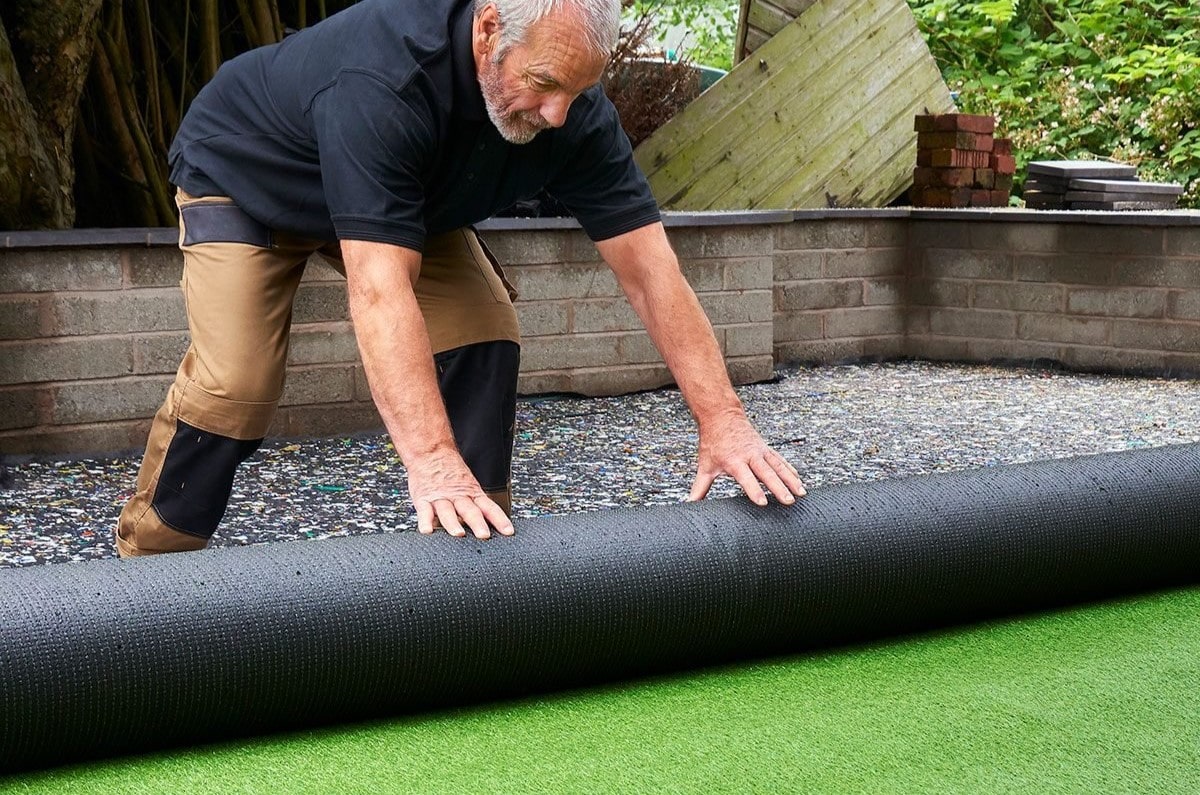
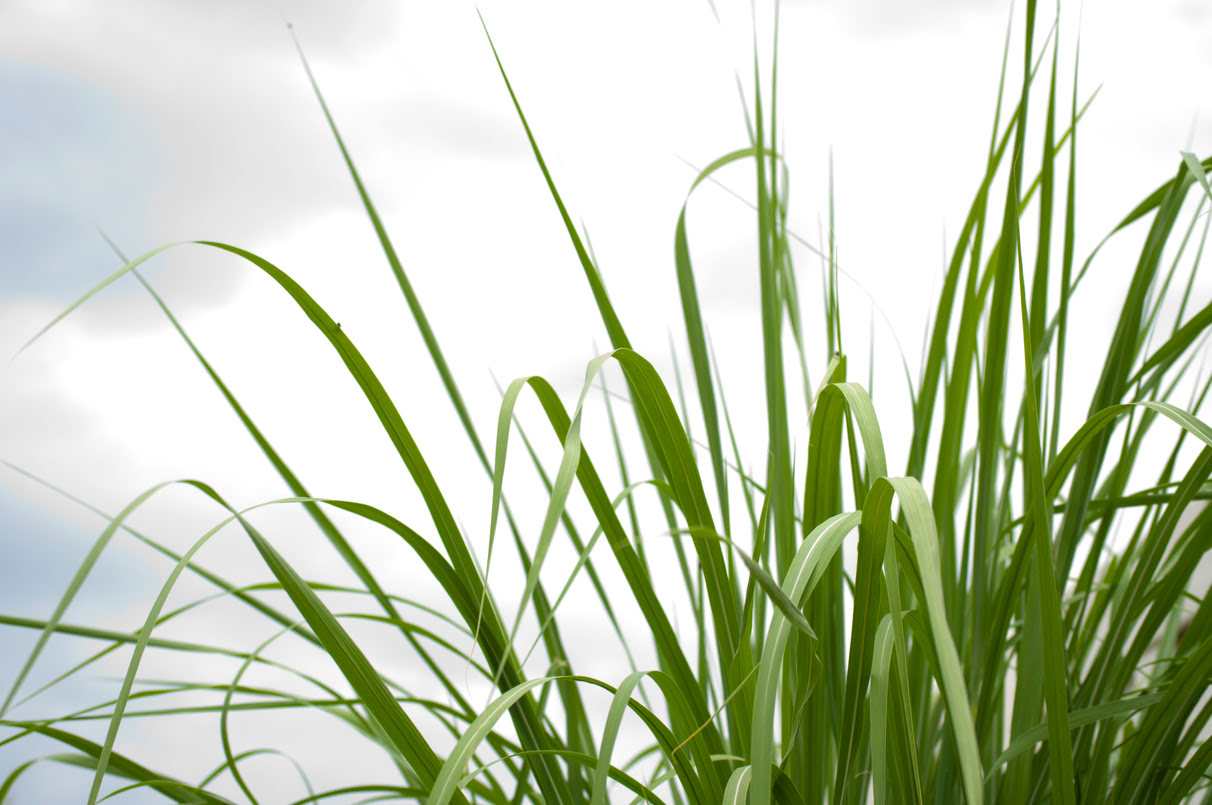

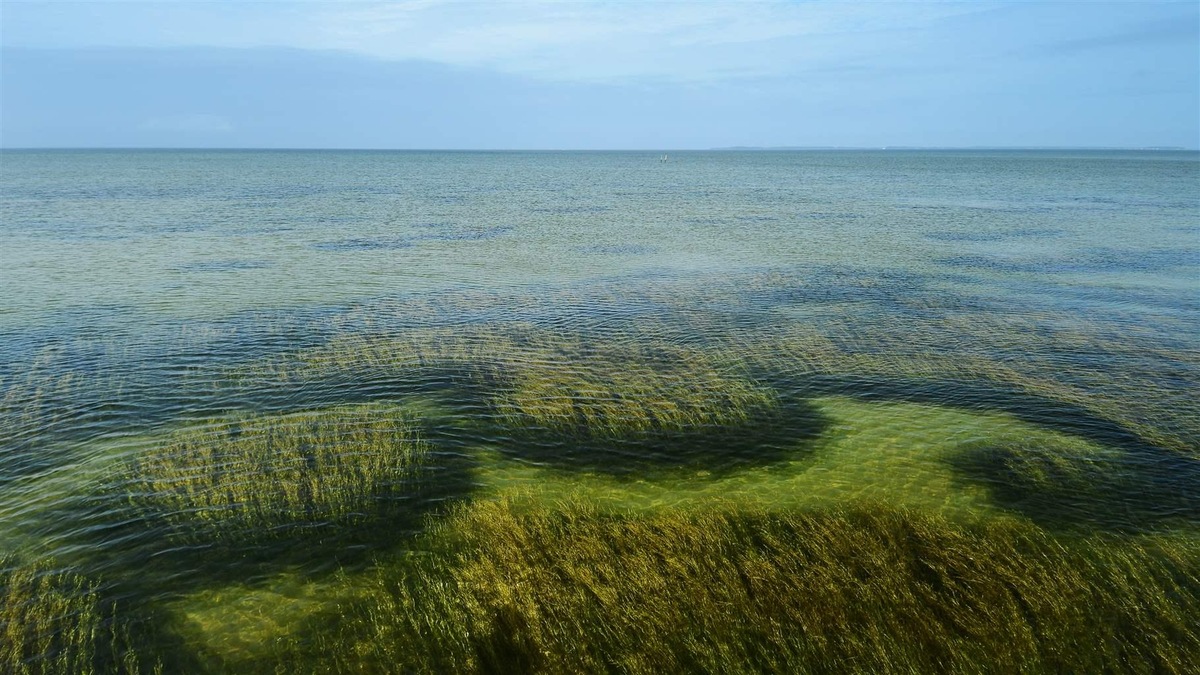


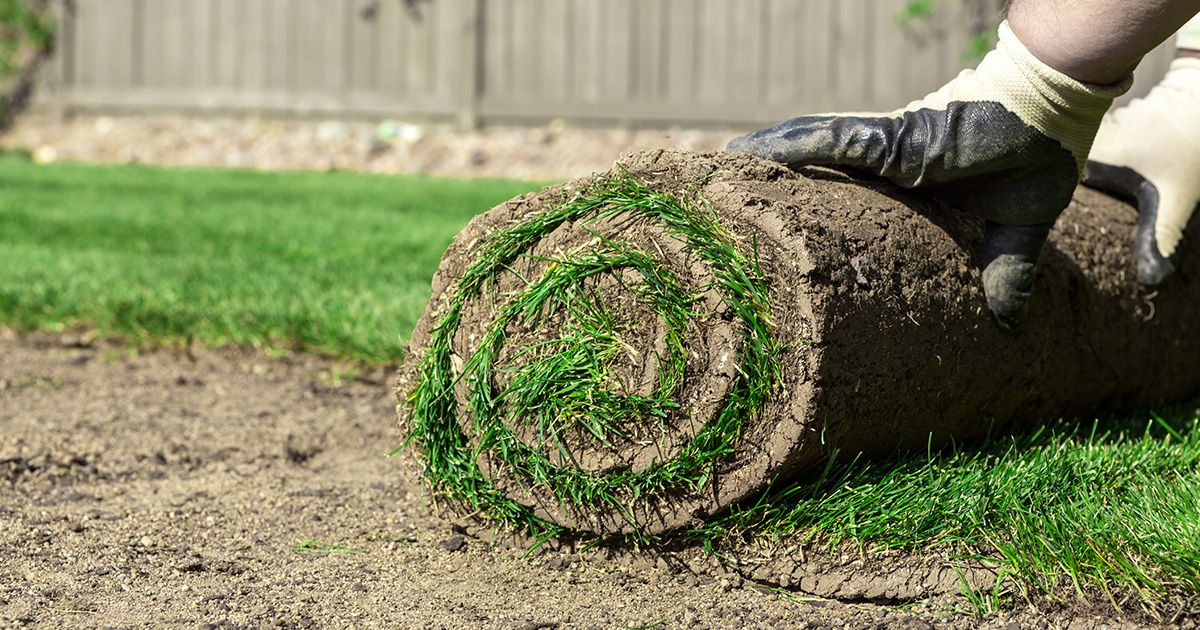
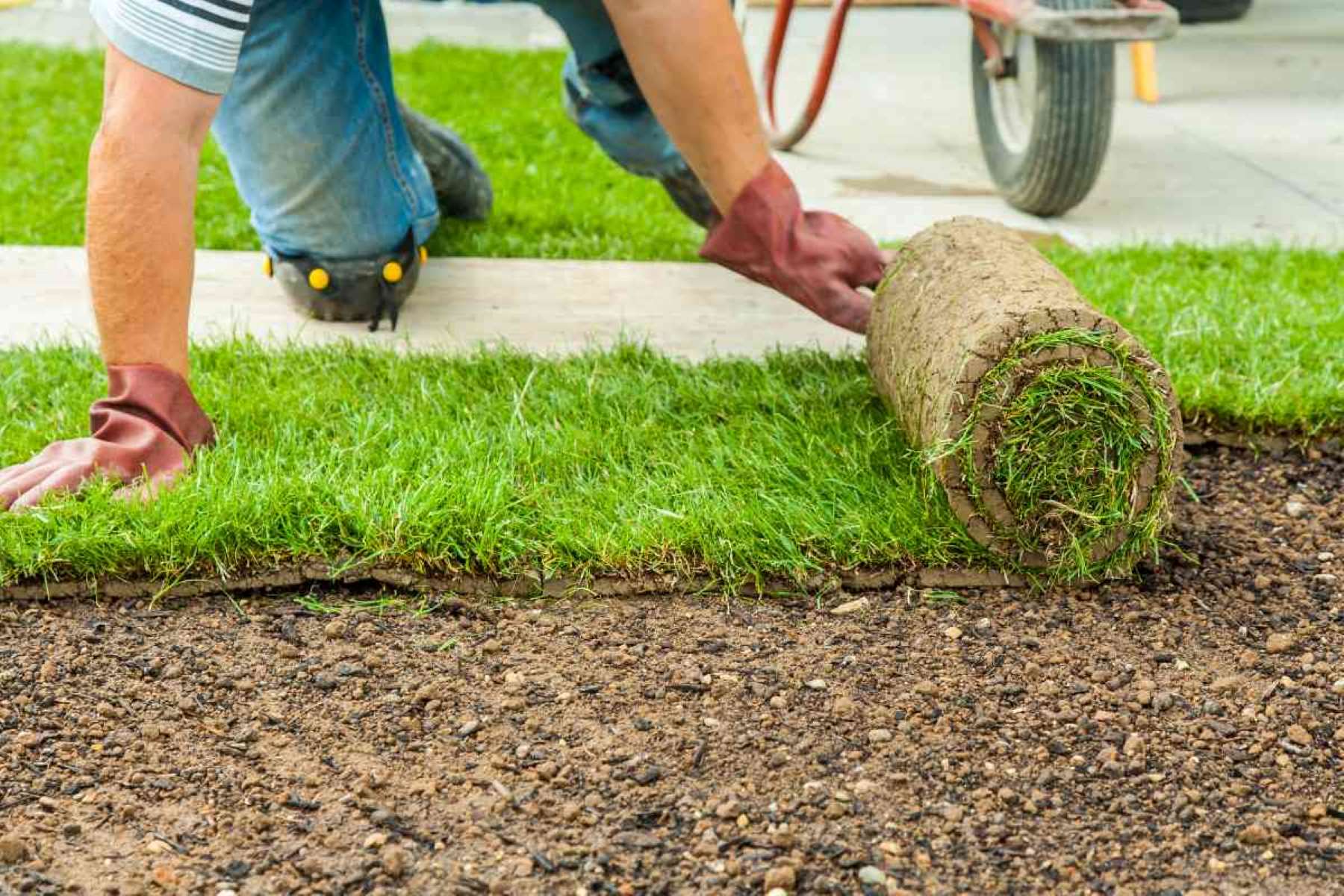
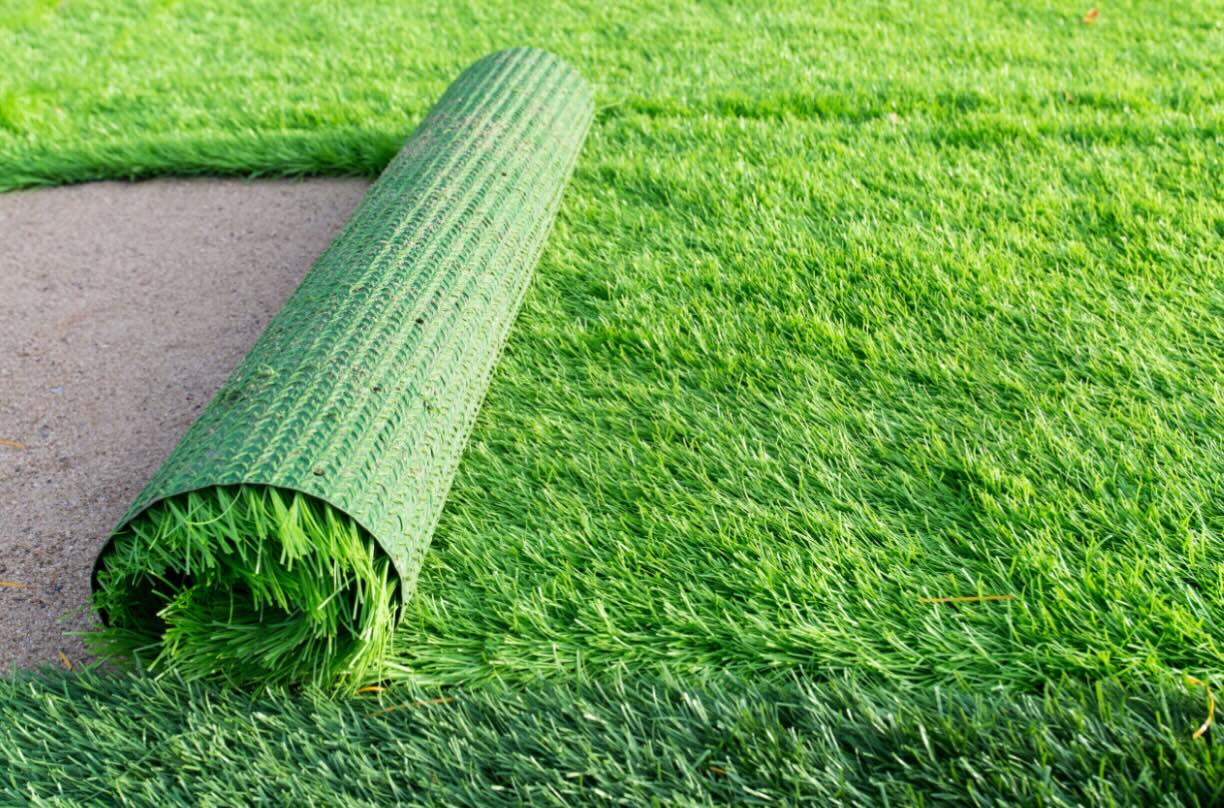

0 thoughts on “What Does Potassium Do For Turf Grass”